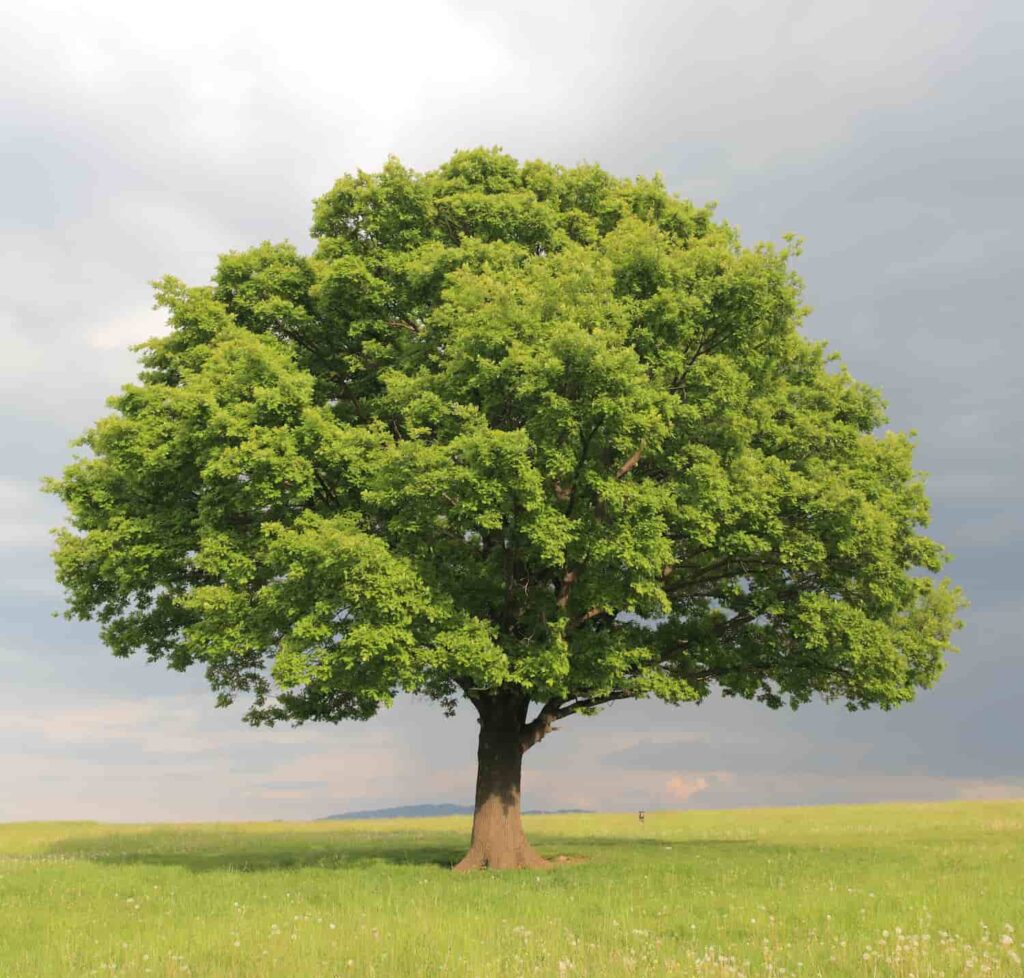The oak tree is a deciduous tree that grows up to 40 feet tall. It is found throughout North America and Europe. Its leaves change color during the autumn season. Acorns are produced on oaks and other types of trees. These small, round seeds contain a hard shell that protects them until they germinate. Once the seed sprouts, it produces roots and shoots. This article will go through everything you need to know about acorns and oak trees.
Texas Oak Trees
Did you know that Texas has an abundance of oak trees? There are over 50 species in Texas alone that you can find on your property or any broad landscape in the Lone Star state. Red and white oaks have several identifying features: lobed leaves with either pointed or round tips, bark with deep fissures and ridges resembling a scaly look, and the coloring of the bark ranging from whitish-gray to a dark, almost black color.
Did you know that there are over 500 species of an oak tree, each with unique characteristics?
White Oak Trees
The whitish color underneath white oaks’ leaves is one of the key characteristics that distinguish them from red oaks. Plus, white oak trees produce acorns faster than red oak trees do.
Red Oak Trees
Red oak trees, named for the deep red coloring of their leaves and their pointed tips, are a species of oak native to much of eastern North America.
What are Acorns?
Acorns are the fruit produced by oak trees. People have been harvesting and eating them since they are easy to harvest, grow quickly, and are rich in nutrients. Acorns are an essential food source for many animals, including squirrels, deer, and birds.
Tannins
Before you gobble up any acorns off the ground, remember that they have tannins that taste bitter. If you consume too many raw acorns without removing the tannins, toxins can build up in your body over time and prevent it from absorbing nutrients.
To get rid of the tannins that are in acorns, you can boil the acorns in water. The water will turn brown from the tannic acid, and you should throw this brown water out. Then, it is time to refill with fresh water and continue boiling until the water no longer turns brown.
Production
The time it takes for an oak tree to begin producing acorns depends on a number of factors. Oak trees start producing acorns at around 20 years of age, but they don’t reach their peak production until they are 50 to 80 years old. Then, after 80 years of age, acorn production begins to fall off. The number of nuts that an oak tree produces depends on how much sunlight the tree receives—those that live in the forest tend to receive less sunlight than those that live in open spaces where there is more light.
White oak trees produce smaller acorns than red oak trees, but the acorns contain less tannin than those of a red oak tree, making them a favorite among animals.
Did you know: the average oak tree can produce up to 10 million acorns during its lifetime?
How Often Do Acorns Fall?
Oak trees produce acorns in a cycle that typically lasts 2 to 3 years. Sometimes, however, there are periods of “mast years” during which large numbers of acorns are produced. These mast years occur every 2 to 3 years and are followed by smaller crops. Such cycles can be seen in the growing season when you’ll find lots of acorns on the ground in fall (after a mast year).
Acorns are sometimes infertile, which results in a failed crop. This can occur when there are extreme weather conditions such as a lack of rainfall during the spring or late freezes after the start of flowering.
Acorn Coloring
If you find green acorns, it can mean that the oak tree is under stress. If the weather conditions meet an extreme factor, it leads to premature acorns.
What Can Acorns be Used For?
Now that we’ve seen how incredibly unappealing an acorn is, let’s take a look at some other ways we can use the little things.
- Animal Feed
- Dye
- Flour
- Fertilizer
As you can see, acorns have many uses. If you mash up an acorn and add it to homemade compost, this will help the compost break down faster. If you’re looking to try something new, why not try baking some cookies made out of acorn flour? Acorns are made from nature, which means we can reuse them for fertilizer by mashing them up and adding them to homemade compost!
To learn more about Acorns and Oak Trees: All Things You Need To Know, call our North Texas team of Arborists.
at (817) 799-7808 or fill out the contact form.
We’re a little different than the average tree care company.
Learn more about Oakwilt.org ISA Certified Arborists!
Our North Texas-based tree doctors can explain how sustainable tree care services add more value to your properties.
Find out more today by giving us a call today.



